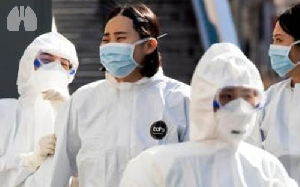
Julia Graham,Iazsmin Bauer Ventura, Chad A. Newton, Cathryn Lee, Noelle Boctor, Janelle Vu Pugashetti, Claire Cutting, Elena Joerns, Habrinder Sandhu, Jonathan H. Chung, Christine Kim Garcia, Michael Kadoch, Imre Noth, Ayodeji Adegunsoye, Mary E. Strek, Justin M. Oldham
European Respiratory Journal 2020 56: 2001205; DOI: 10.1183/13993003.01205-2020
Abstract
Interstitial pneumonia with autoimmune features (IPAF) characterises individuals with interstitial lung disease (ILD) and features of connective tissue disease (CTD) who fail to satisfy CTD criteria. Inclusion of myositis-specific antibodies (MSAs) in the IPAF criteria has generated controversy, as these patients also meet proposed criteria for an antisynthetase syndrome. Whether MSAs and myositis-associated antibodies (MAA) identify phenotypically distinct IPAF subgroups remains unclear.
A multicentre, retrospective investigation was conducted to assess clinical features and outcomes in patients meeting IPAF criteria stratified by the presence of MSAs and MAAs. IPAF subgroups were compared to cohorts of patients with idiopathic inflammatory myopathy-ILD (IIM-ILD), idiopathic pulmonary fibrosis and non-IIM CTD-ILDs. The primary end-point assessed was 3-year transplant-free survival.
269 patients met IPAF criteria, including 35 (13%) with MSAs and 65 (24.2%) with MAAs. Survival was highest among patients with IPAF-MSA and closely approximated those with IIM-ILD. Survival did not differ between IPAF-MAA and IPAF without MSA/MAA cohorts. Usual interstitial pneumonia (UIP) morphology was associated with differential outcome risk, with IPAF patients with non-UIP morphology approximating survival observed in non-IIM CTD-ILDs. MSAs, but not MAAs identified a unique IPAF phenotype characterised by clinical features and outcomes similar to IIM-ILD. UIP morphology was a strong predictor of outcome in others meeting IPAF criteria.
Because IPAF is a research classification without clear treatment approach, these findings suggest that MSAs should be removed from the IPAF criteria and such patients should be managed as an IIM-ILD.
Myositis-specific antibodies identify a distinct interstitial pneumonia with autoimmune features phenotype characterised by clinical features and outcomes similar to patients with ILD due to an idiopathic inflammatory myopathy https://bit.ly/2VCmtab
Footnotes
-
This article has supplementary material available from erj.ersjournals.com
-
Conflict of interest: J. Graham has nothing to disclose.
-
Conflict of interest: I.B. Ventura has nothing to disclose.
-
Conflict of interest: C.A. Newton has nothing to disclose.
-
Conflict of interest: C. Lee has nothing to disclose.
-
Conflict of interest: N. Boctor has nothing to disclose.
-
Conflict of interest: J.V. Pugashetti has nothing to disclose.
-
Conflict of interest: C. Cutting has nothing to disclose.
-
Conflict of interest: E. Joerns reports grants from Pfizer, outside the submitted work.
-
Conflict of interest: H. Sandhu has nothing to disclose.
-
Conflict of interest: J.H. Chung has nothing to disclose.
-
Conflict of interest: C.K. Garcia reports grants from NIH (HL093096), during the conduct of the study; grants from Astra Zeneca, outside the submitted work.
-
Conflict of interest: M. Kadoch has nothing to disclose.
-
Conflict of interest: I. Noth reports personal fees for research, lectures and advisory board work from BI and Genentech, grants from NIH, HLR, Stromedix and Promedior, personal fees for adjudication committee work from Gilead/Perceptive, personal fees for lectures from PILOT CME, personal fees for lectures and advisory board work from Sunovion, outside the submitted work; and has a patent TOLLIP in IPF pending, a patent Plasma proteins in IPF issued, and a patent PBMC expression signature in IPF pending.
-
Conflict of interest: A. Adegunsoye reports lecturing for Boehringer Ingelheim, grants from Pulmonary Fibrosis Foundation and CHEST Foundation, outside the submitted work.
-
Conflict of interest: M.E. Strek reports grants, personal fees and non-financial support from Boehringer Ingelheim, grants from Novartis, outside the submitted work.
-
Conflict of interest: J.M. Oldham reports grants from National Institutes of Health and American College of Chest Physicians, during the conduct of the study; personal fees from Boehringer Ingelheim and Genentech, outside the submitted work.
-
Support statement: This work was supported by the National Heart, Lung, and Blood Institute (grant: K23HL138190, K23HL146942, K23HL148498). Funding information for this article has been deposited with the Crossref Funder Registry.
- Received January 10, 2020.
- Accepted June 28, 2020.
- Copyright ©ERS 2020














